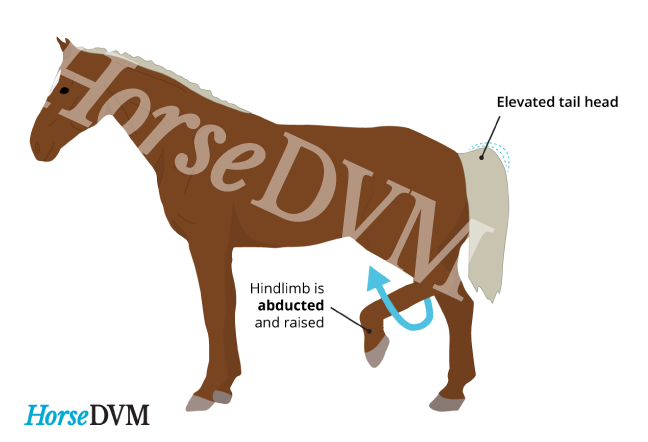Shivers is a chronic, often gradually progressive movement disorder of horses. It usually begins before horses reach 7 years of age and occurs most commonly in tall male horses. Shivers is often first noticed when backing up the horse or by picking up a hindlimb.
Typically, horses with shivers intermittently hold their hindlimb in a flexed position, away from the body for a short duration of several seconds to minutes, while they experience spasmodic muscle tremors in their buttocks muscles and tail. After which, horses will slowly lower the leg back to a normal position.
Horses with shivers are often difficult for farriers to shoe their hindlimbs. Horses with mild cases will often be reluctant to hold their leg up for very long and will often immediately slam their leg back down to the ground. As the disease progresses, the horse may eventually refuse to pick up their feet at all and show exaggerated limb flexion when walking forward. 60 to 74% of horses with shivers show progression of the disease.
